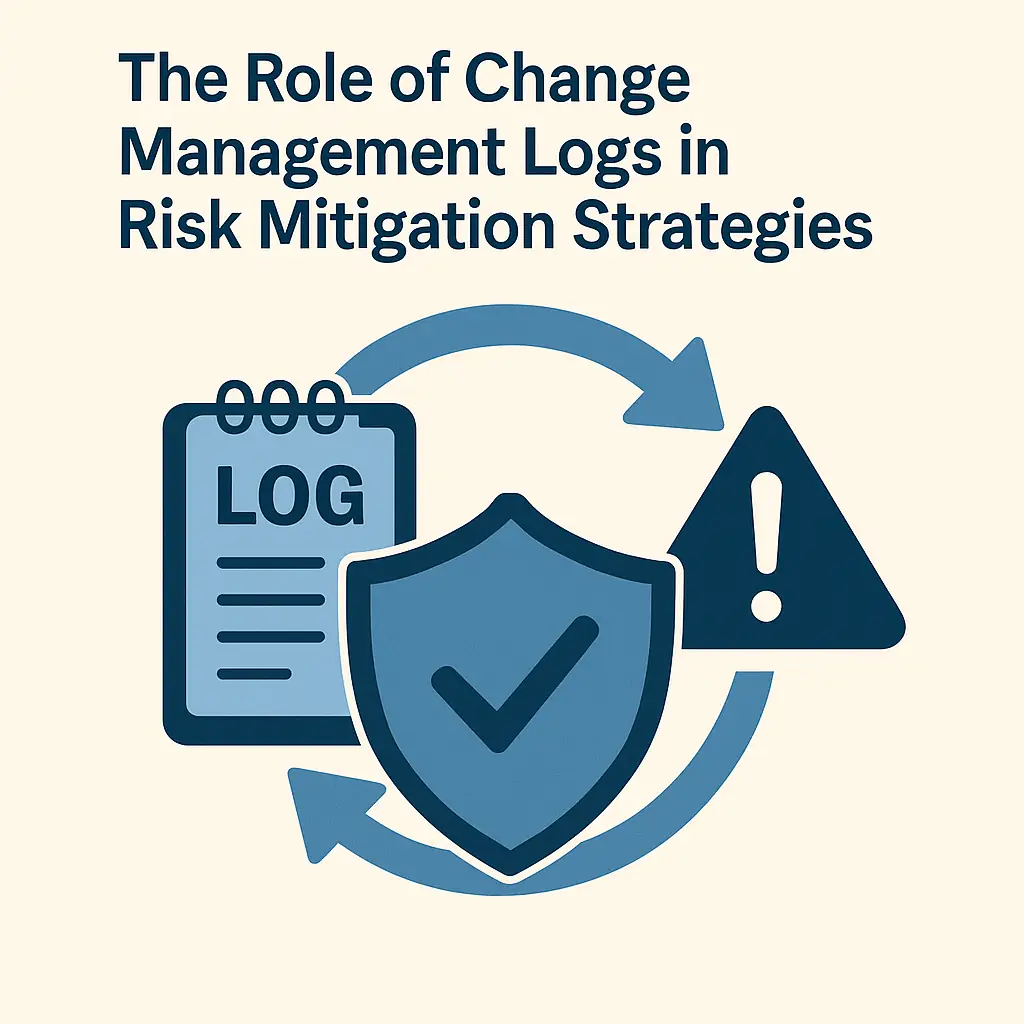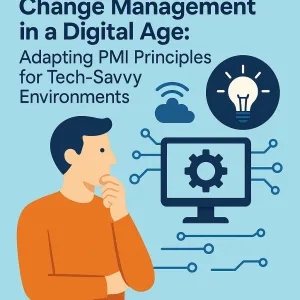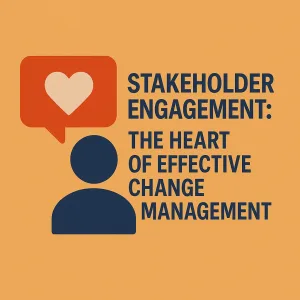Introduction to Change Management Logs
Effective change management is crucial for ensuring that projects remain on track and meet their objectives. A key component of this process is the change management log, which serves as a vital tool for documenting and tracking changes throughout the project lifecycle.
Definition of Change Management Logs
Change management logs are structured records that capture all changes made during a project, including the nature of the change, the reasons behind it, and its impact on the project. These logs provide a comprehensive overview of modifications, ensuring that all stakeholders are informed and that there is a clear trail of decisions made. By maintaining a detailed log, project managers can facilitate better communication and accountability among team members and stakeholders.
Overview of the Change Management Process in Projects
The change management process typically involves several key stages:
- Identification of Change: Recognizing the need for a change, whether due to external factors, stakeholder requests, or internal assessments.
- Documentation: Recording the change in the change management log, detailing its scope, rationale, and potential impacts.
- Evaluation: Assessing the implications of the change on project timelines, resources, and objectives.
- Approval: Gaining necessary approvals from stakeholders before implementing the change.
- Implementation: Executing the change while ensuring that all team members are aware of their roles and responsibilities.
- Review: Monitoring the change’s impact and updating the log accordingly to reflect any further modifications or lessons learned.
This structured approach helps ensure that changes are managed systematically, reducing the likelihood of disruptions and enhancing project success.
Importance of Documenting Changes for Project Success
Documenting changes through a change management log is essential for several reasons:
- Risk Mitigation: By keeping a detailed record of changes, project managers can identify potential risks associated with each modification. This proactive approach allows for the development of mitigation strategies to address these risks before they escalate into larger issues [1][2].
- Stakeholder Engagement: A well-maintained change management log fosters transparency and keeps stakeholders informed about project developments. This engagement is crucial for gaining buy-in and support for changes, which can significantly reduce resistance and enhance adoption [3][4].
- Informed Decision-Making: Access to a comprehensive log enables project managers to make informed decisions based on historical data and the impact of previous changes. This insight is invaluable for planning future modifications and ensuring alignment with project goals [5][6].
- Continuous Improvement: Change management logs serve as a repository of knowledge that can be referenced in future projects. By analyzing past changes and their outcomes, organizations can refine their change management processes and improve overall project performance [7][8].
Change management logs play a pivotal role in the risk management strategies of projects. By documenting changes systematically, project managers can enhance communication, mitigate risks, and ultimately drive project success.
Understanding Risk Management in Projects
Effective risk management is crucial for ensuring that projects achieve their intended outcomes while minimizing potential setbacks. This section will provide a foundational understanding of risk management principles, particularly as they relate to the integration of change management logs in risk mitigation strategies.
Definition and Purpose of Risk Management
Risk management is a systematic process aimed at identifying, assessing, and responding to potential risks that could adversely affect a project’s success. The primary purpose of risk management is to enhance the likelihood of achieving project objectives by proactively addressing uncertainties and minimizing their impact on project performance. By implementing a structured risk management approach, organizations can ensure that they are prepared for potential challenges, thereby safeguarding their investments and resources [5][8].
Types of Risks in Project Management
In project management, risks can be categorized into several types, each requiring different strategies for mitigation:
- Technical Risks: These involve uncertainties related to technology, such as software failures, hardware malfunctions, or integration issues. Technical risks can significantly impact project timelines and deliverables if not managed effectively [5].
- Organizational Risks: These risks stem from internal factors within the organization, including changes in leadership, shifts in organizational priorities, or resource allocation challenges. Organizational risks can disrupt project continuity and affect stakeholder engagement [5].
- External Risks: These encompass factors outside the organization that can influence project outcomes, such as regulatory changes, market fluctuations, or natural disasters. External risks are often unpredictable and require robust contingency planning [5].
The Risk Management Process
The risk management process consists of four key stages, each playing a vital role in ensuring that risks are effectively managed throughout the project lifecycle:
- Identification: This initial step involves recognizing potential risks that could impact the project. It is essential to engage stakeholders and utilize tools such as brainstorming sessions, checklists, and historical data analysis to identify risks comprehensively [5][14].
- Assessment: Once risks are identified, they must be assessed to determine their likelihood and potential impact. This assessment helps prioritize risks based on their severity, allowing project managers to focus on the most critical threats [5][14].
- Response: In this phase, strategies are developed to mitigate identified risks. This may include risk avoidance, transfer, acceptance, or mitigation strategies. A well-structured risk response plan is crucial for outlining the actions to be taken in the event of a risk materializing [3][14].
- Monitoring: The final stage involves continuously monitoring risks throughout the project. This includes tracking identified risks, reassessing their status, and adjusting response strategies as necessary. Change management logs play a significant role in this phase by documenting changes and their impacts on risk profiles, ensuring that project teams remain agile and informed [1][4][12].
Understanding the principles of risk management is essential for project managers and risk executives. By integrating change management logs into the risk management process, organizations can enhance their ability to respond to risks effectively, ultimately leading to more successful project outcomes.
The Intersection of Change Management and Risk Management
The interplay between change management and risk management is crucial for ensuring project success. Change management logs serve as a vital tool in this intersection, particularly in enhancing risk mitigation strategies. Here’s how change management logs contribute to effective risk management practices:
- Changes and Their Impact on Risks: Every change introduced in a project can potentially introduce new risks or alter existing ones. For instance, a modification in project scope may lead to resource constraints or timeline delays, which can escalate the likelihood of project failure. Understanding this dynamic is essential for risk managers and project executives to anticipate and address these risks proactively.
- Tracking Modifications: Change management logs play a pivotal role in documenting all modifications that impact project scope, timeline, and resources. By maintaining a detailed record of changes, project teams can analyze how these adjustments affect overall project risk. This documentation allows for a clearer understanding of the project landscape, enabling teams to identify which changes may necessitate a reassessment of risk factors.
- Timely Updates for Proactive Risk Identification: The significance of timely updates in change logs cannot be overstated. Regularly updating change management logs ensures that all stakeholders are aware of the latest modifications and their implications. This practice facilitates proactive risk identification, allowing project managers to implement mitigation strategies before risks escalate. By staying informed about changes, risk managers can adjust their risk management plans accordingly, ensuring that potential threats are addressed in a timely manner.
Change management logs are not merely administrative tools; they are integral to the risk management process. By effectively tracking changes and their impacts, these logs empower project teams to identify and mitigate risks proactively, ultimately contributing to the successful delivery of projects. For risk managers and project executives, leveraging change management logs is essential for fostering a resilient project environment.
Best Practices for Maintaining Change Management Logs
Change management logs play a crucial role in the intersection of change management and risk mitigation within project management. By systematically documenting changes, organizations can better anticipate, assess, and respond to potential risks that arise during the project lifecycle. Here are some actionable strategies for creating and maintaining effective change management logs:
Establishing a Clear Format and Structure for Change Logs:
- A well-defined format is essential for ensuring that change logs are both comprehensive and easy to navigate. This structure should include key elements such as:
- Change Description: A brief overview of the change being made.
- Reason for Change: Explanation of why the change is necessary, which can help in understanding its impact on the project.
- Impact Assessment: An evaluation of how the change may affect project timelines, resources, and overall objectives.
- Approval Status: Documentation of who approved the change and when, which is vital for accountability and traceability.
- Implementation Details: Information on how the change will be executed, including timelines and responsible parties. This structured approach aids in risk identification and mitigation by providing a clear record of changes and their implications [10][12].
- Regular Updates and Reviews of the Change Log by Project Teams:
Consistency in updating the change log is critical. Project teams should establish a routine for reviewing and updating the log, which can include: - Weekly or Bi-weekly Reviews: Regular meetings to discuss recent changes and their impacts can help keep the log current and relevant.
- Integration with Project Management Tools: Utilizing project management software that allows for real-time updates can streamline the logging process and ensure that all team members have access to the latest information.
- Monitoring for Emerging Risks: By regularly reviewing the change log, teams can identify patterns or recurring issues that may indicate underlying risks, allowing for proactive mitigation strategies to be developed [3][14].
- Involving Stakeholders in the Change Logging Process for Transparency:
Engaging stakeholders in the change management logging process fosters transparency and collaboration. This can be achieved through: - Stakeholder Workshops: Organizing sessions where stakeholders can discuss potential changes and their implications encourages buy-in and shared understanding.
- Feedback Mechanisms: Implementing channels for stakeholders to provide input on changes can enhance the quality of the change log and ensure that all perspectives are considered.
- Visibility of the Change Log: Making the change log accessible to all relevant parties promotes accountability and ensures that everyone is informed about changes and their potential risks [1][9].
Implementation Details: Information on how the change will be executed, including timelines and responsible parties. This structured approach aids in risk identification and mitigation by providing a clear record of changes and their implications [10][12].
Regular Updates and Reviews of the Change Log by Project Teams: Consistency in updating the change log is critical. Project teams should establish a routine for reviewing and updating the log, which can include:
Monitoring for Emerging Risks: By regularly reviewing the change log, teams can identify patterns or recurring issues that may indicate underlying risks, allowing for proactive mitigation strategies to be developed [3][14].
Involving Stakeholders in the Change Logging Process for Transparency:
Engaging stakeholders in the change management logging process fosters transparency and collaboration. This can be achieved through:
By adhering to these best practices, project managers and risk managers can enhance the effectiveness of change management logs, ultimately leading to improved risk mitigation strategies and more successful project outcomes.
Key Lessons Learned
From these case studies, several key lessons emerge regarding the role of change management logs in risk mitigation:
- Documentation is Essential: A well-maintained change management log is crucial for tracking modifications and understanding their implications on project risks.
- Proactive Risk Management: By assessing risks associated with changes, project teams can implement timely mitigation strategies, reducing the likelihood of negative impacts.
- Stakeholder Communication: Keeping stakeholders informed through regular updates fosters trust and collaboration, which are vital for successful project execution.
Change management logs are not merely administrative tools; they are integral to effective risk management practices in project management. By learning from both successful and unsuccessful examples, risk managers and project executives can better appreciate the value of these logs in navigating the complexities of project execution.
Integrating Change Management Logs into Risk Mitigation Strategies
Change management logs play a crucial role in the effective management of projects, particularly in the context of risk mitigation. By systematically documenting changes, these logs provide valuable insights that can enhance risk management practices. Here’s a framework for integrating change management logs into overall risk management strategies, tailored for risk managers and project executives.
Step-by-Step Process for Integrating Change Logs into Risk Management
- Define the Change Management Risk Assessment Framework:
- Establish a clear understanding of the objectives of the change initiative. This clarity will guide the risk assessment process and ensure that all potential risks associated with changes are identified and evaluated effectively [13].
- Conduct Readiness Assessments:
- Perform assessments to gauge the project’s readiness for change. This includes evaluating skills, reviewing processes, and identifying dependencies that may impact the change. Such assessments help in understanding the potential risks that could arise from the change [11].
- Document Changes and Associated Risks:
- Utilize change management logs to document all changes made during the project lifecycle. Each entry should include details about the change, the rationale behind it, and any identified risks. This documentation serves as a reference point for future risk assessments and decision-making [6].
- Evaluate and Approve Changes:
- Implement a systematic approach to evaluate and approve changes. This process should involve assessing the impact of changes on existing risks and determining whether additional mitigation strategies are necessary [6].
- Regularly Review and Update Logs:
- Establish a routine for reviewing change management logs. Regular updates ensure that the logs reflect the current state of the project and any new risks that may have emerged as a result of changes [8].
- Integrate with Risk Management Tools:
- Leverage risk management tools that can incorporate change management logs. This integration allows for a comprehensive view of risks and changes, facilitating better decision-making and proactive risk management [10].
Establish a clear understanding of the objectives of the change initiative. This clarity will guide the risk assessment process and ensure that all potential risks associated with changes are identified and evaluated effectively [13].
Conduct Readiness Assessments:
Perform assessments to gauge the project’s readiness for change. This includes evaluating skills, reviewing processes, and identifying dependencies that may impact the change. Such assessments help in understanding the potential risks that could arise from the change [11].
Document Changes and Associated Risks:
Utilize change management logs to document all changes made during the project lifecycle. Each entry should include details about the change, the rationale behind it, and any identified risks. This documentation serves as a reference point for future risk assessments and decision-making [6].
Evaluate and Approve Changes:
Implement a systematic approach to evaluate and approve changes. This process should involve assessing the impact of changes on existing risks and determining whether additional mitigation strategies are necessary [6].
Regularly Review and Update Logs:
Establish a routine for reviewing change management logs. Regular updates ensure that the logs reflect the current state of the project and any new risks that may have emerged as a result of changes [8].
Tools and Software for Facilitating Integration
- Project Management Software: Tools like Microsoft Project, Asana, or Trello can be used to maintain change logs and link them to risk management features. These platforms often have built-in functionalities for tracking changes and assessing their impact on project timelines and deliverables.
- Risk Management Tools: Software such as RiskWatch or RiskyProject can help in analyzing risks associated with changes documented in change logs. These tools provide risk assessment matrices and reporting features that enhance visibility into potential project disruptions [10].
- Collaboration Platforms: Utilizing platforms like Slack or Microsoft Teams can facilitate communication among project teams regarding changes and associated risks. These tools can help create a culture of transparency and continuous improvement by allowing team members to share insights and updates in real-time.
Creating a Culture of Continuous Improvement and Adaptation
To foster a culture of continuous improvement and adaptation within project teams, it is essential to:
- Encourage Open Communication: Promote an environment where team members feel comfortable discussing changes and their potential impacts. This openness can lead to more effective risk identification and mitigation strategies.
- Provide Training and Resources: Equip team members with the necessary training on change management and risk assessment processes. This knowledge empowers them to contribute actively to the integration of change logs into risk management practices.
- Celebrate Successes and Learn from Failures: Recognize and celebrate instances where effective change management has led to successful risk mitigation. Conversely, analyze failures to understand what went wrong and how similar issues can be avoided in the future.
By integrating change management logs into risk mitigation strategies, organizations can enhance their ability to navigate uncertainties and improve project outcomes. This approach not only strengthens risk management practices but also fosters a proactive culture that embraces change and continuous improvement.
Conclusion
The integration of change management logs plays a pivotal role in identifying and mitigating risks effectively. These logs serve as a structured record of all changes made throughout the project lifecycle, providing a clear trail that helps project teams understand the implications of each modification. By documenting changes, project managers can better assess potential risks associated with those changes, allowing for proactive measures to be taken before issues escalate. This systematic approach not only enhances transparency but also fosters accountability among team members, which is crucial in managing project uncertainties.
Moreover, the adoption of best practices in maintaining change management logs can significantly bolster risk mitigation strategies. Project executives and risk managers are encouraged to implement these practices, such as ensuring that logs are updated regularly, accessible to all stakeholders, and reviewed during project meetings. By doing so, they can create a culture of continuous improvement and responsiveness to change, which is essential in today’s dynamic project environments.
As project management continues to evolve, the reliance on effective change management becomes increasingly critical. The ability to adapt to changes while managing associated risks is a hallmark of successful project execution. Therefore, embracing change management logs not only aids in risk mitigation but also positions organizations to thrive amidst the complexities of modern project demands. In conclusion, the strategic use of change management logs is not just a best practice; it is a vital tool for ensuring project success and resilience in the face of change.
Find out more about Shaun Stoltz https://www.shaunstoltz.com/about/.
This post was written by an AI and reviewed/edited by a human.



